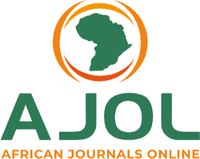SEASONAL AUTOREGRESSIVE INTEGRATED MOVING AVERAGE (SARIMA) OF NIGERIAN GROSS DOMESTIC PRODUCT
Keywords:
Forecasting, GDP, SARIMA.Abstract
This paper presents a research on gross domestic product; gross domestic product (GDP) of
Nigeria in 2015 records the lowest growth in four years. In this paper, the features of
quarterly data of Nigeria’s GDP obtained from aggregated quarterly data of Central Bank of
Nigeria starting from 2010 to 2015 were studied. Time series plot of the data shows that the
data is not stationary, after decomposing the data into its component parts, it was discovered
that Nigeria’s GDP has a trend component with seasonal component and enough residuals
component. To model the GDP, a class of SARIMA (Seasonal autoregressive integrated
moving average) models is built following Box-Jenkins method. Then, the efficient model is
SARIMA (1,0,0)(0,1,0)[4]. According to the recognition rules and stationary test of time
series under the AIC and BIC criterion, the fitted SARIMA model was then used to forecast
the GDP for the next three years. The forecast showed that there is an upward trend and the
relative, predicted values were within the 95% confidence interval and also Ljung-Box and
Jarque- Bera Test were used to test the adequacy of the fitted model and we recommend a
need for economic diversification to solve recession issued.





